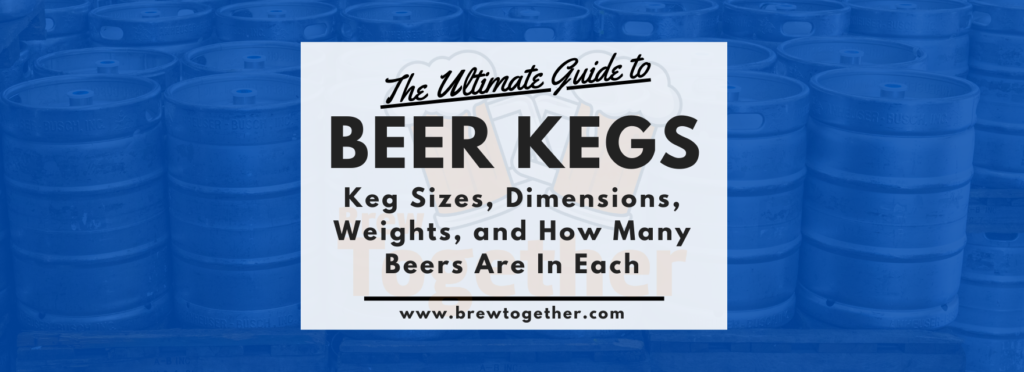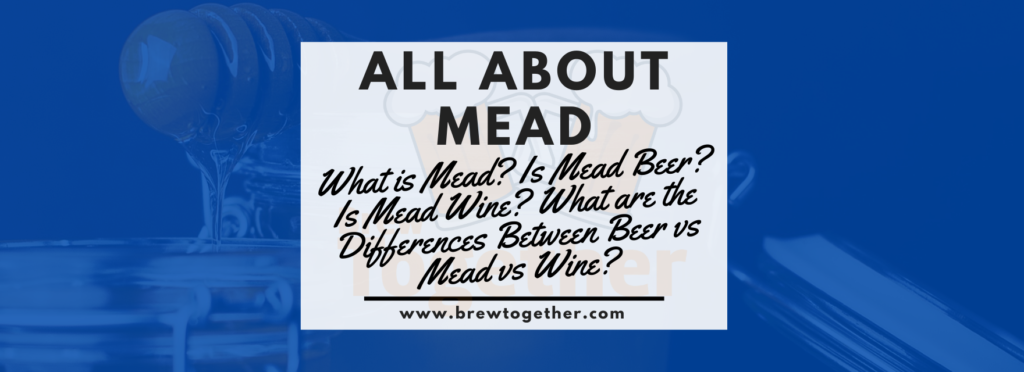How Long Does Beer Last in the Keg? How to Stop Your Beer From Going Bad and Keep it Fresh Longer


If you’re looking for a sign that good times are about to happen, you can’t do much better than a fresh keg of beer. Unfortunately, not many things can ruin a party as fast as a stale keg of beer. So, how long does beer last in the keg? Unfortunately, there is no single answer.
How long beer lasts in a keg depends on several factors. In this article, we will provide an overview of some commonly asked questions about kegged beer and some tips for how to get the most out of your kegged beer experience.
Unlike homebrewers, most people don’t usually keep beer on tap at home, and because of that most people buying kegged beer don’t have a kegerator to serve it. (If you are a homebrewer and are interested in getting into kegging, click here to see our Guide to the Pros and Cons of Kegging vs. Bottling Homebrew Beer!)
If you’re planning on buying a keg of beer for a party or event, but you’re worried about the beer going bad, we’re here to help. If you’re not sure what type of keg to get, check out our Ultimate Guide to Beer Kegs: Keg Sizes, Dimensions, Weights, and How Many Beers Are In Each Type of Keg.
Factors That Affect the Shelf Life of Beer
There are several factors that affect how long beer stays fresh before it goes bad. The primary things that make beer go bad faster are oxygen, light, temperature, style, pasteurization, and the storage vessel.


Oxygen
Exposure to oxygen, which causes a chemical reaction called oxidation, can occur at any point in the brewing process and is one of the most damaging things that can happen to beer. When exposed to too much oxygen, beer becomes stale within about 12-24 hours. Oxidized beer, especially when oxidation occurs during packaging or storage, causes beer to take on an off flavor best described as “wet cardboard”. Oxidized beer can also taste papery, leathery, catty, or even like black currant.
While there are a very small number of beer styles that improve from exposure to oxygen at certain points in the brewing process, oxygen is generally beer’s worst enemy. Oxidation can also result in diacetyl, a compound that can result from the natural oxidation process or from bacterial infection, which can cause beer to take on a flavor best described as buttery or butterscotch.
Light
If you’ve ever been handed a light lager in a clear bottle on vacation, you may be able to recognize the effects of another of beer’s greatest enemies: exposure to light. Light exposure causes off flavors and aromas to emerge that are often described as “skunky”, and severely reduces the beer’s shelf life. Skunked beer, also called “light-struck” beer, has been damaged by ultraviolet light breaking down hop compounds and producing sulfur compounds in the beer similar to those found in skunk spray. Because almost any beer has hop compounds in it, just about every beer style is prone to skunking.
The reason skunking is most commonly seen in light lagers like Corona and Heineken is because of the vessel the beer is stored in. Darker bottles block some UV rays, but beer stored in green glass bottles and especially clear glass bottles are very prone to skunking. Bottled beer is the most prone to light exposure, while cans and kegs completely block UV light from damaging the beer and a reason why some breweries are switching from bottling to canning.
Temperature
The temperature that beer is stored at also drastically affects how long it lasts before it goes bad. Most beers should be refrigerated during storage for the longest shelf life. For kegged beer that has been tapped, avoid letting the beer get above serving temperature. Keeping a tapped keg cold helps preserve carbonation and freshness.
Correct temperatures for storage and serving most beer styles is 38 degrees Fahrenheit (38°F, which is about 3°C). Most craft breweries follow the “3-30-300 rule”. This rule states that the same flavor and aroma degradation occurs at different lengths of storage at different temperatures. Storing beer for 3 days at 90°F is approximately equal to storing beer for 30 days at room temperature (72°F) and 300 days at ideal storage temperature (38°F).
As you can see, keeping your beer keg at the recommended temperature will help it last for a long time. A refrigerator is ideal, but at a minimum, always store beer in a cool place. Want to learn more about beer temperature? Check out our article about how long it takes beer to chill depending on volume and storage container!
Type of Beer
Different types of beer lose their desirable characteristics and take on undesirable characteristics at different rates. Some beer styles, like light lagers (the most common style of beer bought by the keg), pale ales, and wheat beer have a shorter shelf life. These beers, regardless of how well-stored they are, should be consumed within about 120 days of being packaged. Other styles of beer are able to be stored longer and even aged to bring out desirable characteristics.
Beer styles that are heavier and darker, as well as those with a higher alcohol content, like porters and stouts, can be stored a bit longer, usually up to about 180 days after packaging. Hoppy beers like India Pale Ales (IPAs), and especially Hazy IPAs, must be consumed as fresh as possible. Generally, IPAs begin to lose their desirable hop characteristics within a month or two. Hops, the ingredient that gives IPAs their bitterness, flavor, and aroma, degrade more rapidly than other beer ingredients, making IPAs one of the least shelf stable styles of beer.
Pasteurization
Unless you’re drinking homebrewed beer that was handled improperly during the brewing process, you likely don’t need to worry about bacterial infection in the beer. Commercially sold beer is generally pasteurized. Pasteurization is a process in which beer is heated up to a temperature that kills any microorganisms that may spoil the beer. Pasteurization prolongs the shelf life of beer by preventing the risk of spoilage due to bacterial infection.
Storage Vessel
The type of storage vessel also makes a difference in how long a beer stays fresh. Beer is generally stored in beer cans, bottles, or kegs. Each storage vessel has pros and cons, generally based on the amount of light and oxygen that the beer inside is subjected to.
For example, bottles allow the beer to be exposed to light, which “skunks” the beer. Clear bottles let in the most light, which results in beer stored in clear bottles spoiling the fastest. Green bottles are better than clear, but still allow too much light exposure to be a good solution for long-term storage. Brown bottles are the best option for bottles and let in the least light, however, some light still makes it through.
Another issue with bottles is that bottle caps are not 100% airtight, which means that over time bottled beer will lose carbonation and be exposed to small amounts of oxygen. This isn’t usually an issue as long as beer is consumed by the expiration date, but it can present quality issues in expired beer.
When storing bottled beer, which allows for light exposure, make sure the beer bottles are stored in a cool, dark place to maximize their shelf life. While light is not overly concerning to canned or kegged beer, you will still want to keep them out of direct sunlight so that you can avoid high temperatures and temperature fluctuation. Cans do not allow any light to pass into the beer and hold carbonation longer than bottles. This is one of the reasons why craft breweries have been moving to canning beer rather than bottling it.
Kegs, when properly maintained and stored, keep beer fresh and unspoiled the longest because they can be kept under pressure using a carbon dioxide (CO2) system and because they do not allow the beer inside to be exposed to any light.
Want to learn more about kegs? Check out our Ultimate Guide to Beer Kegs: Keg Sizes, Dimensions, Weights, and How Many Beers Are In Each Type of Keg.
How Long Does Beer Last in a Keg?


Now that you know the different factors that cause beer to go bad, let’s get down to how long beer lasts in a keg. When properly stored and untapped, pasteurized beer lasts for about 3-4 months in a keg and unpasteurized beer lasts for about 6-8 weeks in a keg. These timelines are not exact, and some people report that they have had beer remain fresh for even a year or two in an untapped keg. One thing is for sure, though: beer is intended to be consumed fresh, and there are very few styles of beer that get better with age.
Remember, though, that these timelines include the time the kegged beer spends in transit and at the store you purchase it from. Kegged beer will display either an expiration date, which is the day that the brewery believes the beer will start to degrade in quality, or a “born on” date, which is the day the keg was filled.
By far, the biggest factor in how long a keg of beer stays fresh is the method you use to pour the beer from the keg. Unfortunately for most people purchasing kegs of beer, the most common types of taps provided with the keg are damaging to the beer.
We do not recommend using a pump handle (sometimes called a manual pump, party pump, hand pump, or a picnic pump) to serve kegged beer! Using pumps like these will introduce a large amount of oxygen into the beer, causing it to rapidly spoil as well as produce an unpleasant flat beer. In fact, with taps like these, your beer will be ruined within about 12-24 hours. The only appropriate time to use a pump handle for serving kegged beer is when you know you will finish the entire keg in one day. Even then, using these pumps is not a good idea if you’re looking for a quality pour and don’t like stale beer.
If you have a kegerator or draft system that uses CO2 to dispense the beer from the keg, you’re in luck. As long as only CO2 (or in some cases, Nitrogen) is used to dispense the beer, it will stay fresh for as long as it would have untapped. Unless you buy or brew a lot of kegs of beer, you probably don’t have a kegerator and CO2 tank lying around.
To keep your kegged craft beer fresh for as long as possible without a bulky and expensive kegerator, we strongly recommend using a portable CO2 pump system called a QuikTap. The QuikTap SS combines all the elements of a commercial draft system into one convenient portable package and keeps your beer fresh and carbonated for months with no pumping required. That means, if you don’t finish your keg right away, you can just tap it again later. It starts paying for itself on the very first keg.
How does the QuikTap Keep the Beer Fresh?
The QuikTap dispenses beer with a continuous supply of CO2 pressure. By preventing oxygen exposure, beer stays fresh and carbonated. Simply tap the keg, adjust the regulator to the desired pouring pressure and you’re ready to go!
The 30 PSI regulator gauge lets you control precise control of your serving pressure. For ultimate control, the QuikTap SS comes with a Perlick 650ss flow control faucet. With the flow control, you can easily add restriction to serve highly carbonated beers or even soft drinks.
All QuikTaps are fitted with compact 12oz refillable CO2 tank that are inexpensive and easy to fill. If you have access to bulk CO2, refilling your tank is even simpler and less expensive with one of QuikTap’s fill stations. You are also able to convert your regulator to use 74g single use CO2 cylinders with the use of their cylinder adapter.
The QuikTap SS is only 12” long leaving only a few drops of wasted beer. With such a short draw, it wastes almost nothing and takes only a few minutes to clean up with the QuikTap Cleaning Kit (for sanke D type kegs). After a long day, the last thing you want to do is to spend a ton of time cleaning up. The QuikTap greatly simplifies everything so you can spend more time enjoying the party and your beer with friends.
The QuikTap SS is available in several configurations that make it compatible with any coupler available on commercial kegs, including the American D style coupler (most commonly used for domestic beers) as well as the European S style coupler.
Overall, the best way to extend the shelf-life of your keg is to use a QuikTap system to dispense your kegged beer under pressure. It’s a portable, cost-effective option that pays for itself after saving just a few kegs of beer from an oxygen-induced premature death.
How Long Does Beer Last In the Fridge?
A refrigerator is an ideal storage location for beer, regardless of the vessel it is stored in, but especially important for bottled beer. Like we discussed at the beginning of the article, the primary enemies of beer freshness are light, temperature, and oxygen. The refrigerator effectively blocks both UV light and high temperatures, making it an excellent way to keep beer fresh longer.
The optimal temperature for storing beer in the fridge is about 38°F. Be careful not to drop the temperature too low, though. Most beer freezes at about 28°F, and when beer freezes it expands and can destroy the can, bottle, or even keg. Don’t keep the fridge temperature set too high either. At warm temperatures (at or above about 50°F) bacteria can form in the beer, and the warmer the beer is, the faster the signs of oxidation will start to show.
It’s not that beer immediately goes bad without refrigeration. Most beer can be stored in a sealed container at 50°F to 55°F without issue but storing it in the refrigerator is a great way to extend its life.
To extend the shelf life of the keg, store beer at the ideal temperature and either untapped or dispensed using a CO2 beer dispensing system like a QuikTap SS. If you do these things, your beer will last up to or past the manufacturer’s use-by date.
How to Tell if Beer Has Gone Bad
One of the first things to check if you suspect a beer may have spoiled is the expiration date. Beer is intended to be consumed fresh and is at its best the moment it is sealed in a keg, can, or bottle. The brewery knows how long each style stays fresh for in the keg, can, or bottle, so follow their guidance and make sure you drink it before the expiration date. This is not an absolute rule, where one day the beer is fine and the next it is completely ruined, but it is an important guideline worth following.
Beer begins to show signs of spoilage that affect its appearance, aroma, and flavor.
Visual signs a beer has begun to go bad include a lack of carbonation or head (the foam that sits on top of liquid beer in a glass), or a darkening of the color. Some styles, like India Pale Ales (IPAs) are notorious for darkening from oxygen exposure.
Aroma is often a dead giveaway when determining if a beer has spoiled. Beer that has been spoiled due to light exposure will often have a smell best described as “skunky”. Spoiled beer can also smell sour or rotten depending on the style and type of spoilage.
If you aren’t sure that a beer has become undrinkable based on its appearance or aroma, it’s time to trust your taste buds. Give the beer a small taste test, searching for off flavors. Off flavors in the way beer tastes can be described as a skunky taste (usually due to light exposure), stale (often described as a “wet cardboard” flavor), or sour (often due to a bacterial infection).
Is it Safe to Drink Expired Beer?
While it is PROBABLY safe to drink beer after its posted freshness date, we don’t recommend it. One, it likely doesn’t taste good, and certainly doesn’t taste as good as fresh beer would. Two, even though spoiled beer is generally not dangerous to drink, there is a small risk of illness. Why take the risk on bad beer? Get a new beer and enjoy the fresh taste.
Enjoy!
There are a lot of things you can do to keep your beer fresh. By avoiding light, high temperature, and most of all oxygen exposure, you can extend the life of your beer and keep enjoying it at its best. For you beer lovers that are going to buy beer by the keg, we highly recommend checking out the QuikTap SS for a simple, easy, and cost-effective way to enjoy every drop to the last bit of a keg.
Ready to start pouring? Check out our guide to how to pour the perfect pint of beer!
Thanks for Reading!
Still have questions about anything beer and brewing related? Leave a comment below or post in the forums! The BrewTogether Community is made up of an awesome group of homebrewers around the world that are always supportive and happy to help answer your questions!
Thank you for reading! If you like this article, please share it with your friends using the social media share buttons below! We need your help getting the word out about BrewTogether!
If you’re not a member of BrewTogether, we’d love for you to join! BrewTogether is completely free, and signing up is easy! Click here to join! We’d love to have you as a member of the BrewTogether Community!
Now using BrewTogether is easier than ever! Download the FREE BrewTogether Mobile App – available on both the Apple App Store and the Google Play Store! The BrewTogether App is completely free and drastically improves the experience of using BrewTogether on a mobile device.
Affiliate Disclosure: BrewTogether is a participant in the Amazon Services LLC Associates Program, an affiliate advertising program designed to provide a means for us to earn fees by linking to Amazon.com and affiliated sites. BrewTogether is also a participant in an affiliate program with MoreBeer, our favorite online homebrewing equipment/ingredients retailer. Some of the links in this article are affiliate links, which means that if you choose to make a purchase after clicking the link, I will earn a small commission at no additional cost to you. Please feel free to reach out with questions. Thank you for your support!







Responses